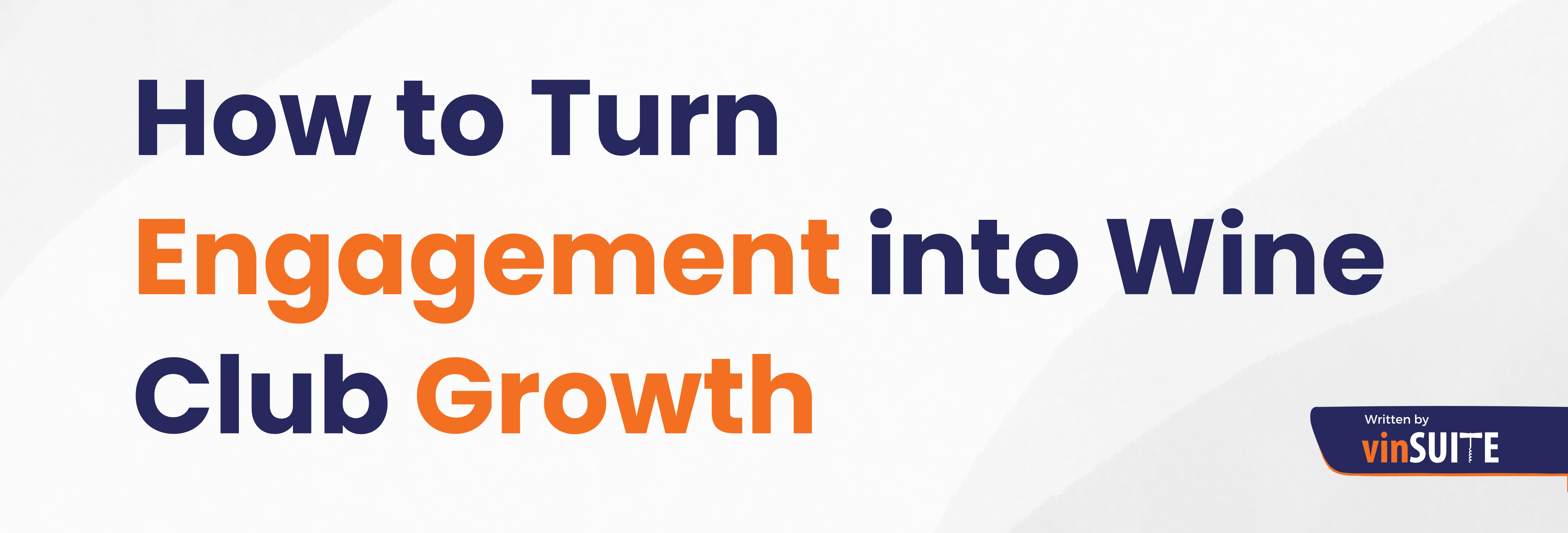
Building on Chapter 4 of The 2025 Guide to Wine Club Growth
There’s a reason email marketing remains one of the most powerful tools for growing a wine club—it’s personal, direct, and measurable. When done right, it delivers the highest ROI of any digital channel.
But here’s the thing: most winery emails don’t get read.
Maybe they blend in with the flood of promotional emails people receive daily. Maybe they don’t feel personal. Or maybe, worst of all, they’re going straight to the spam folder.
That’s the power of TikTok. It’s not just a platform for dance trends—it’s a discovery engine.
So how do you make sure your emails actually get opened, clicked, and lead to real wine club growth? It starts with engagement.
The First Step: Track What’s Working (and What’s Not)
If you’re sending emails but not tracking results, you’re essentially throwing messages into the void, hoping they land.
The key numbers to watch:
- Open rate: How many people actually open your emails?
- Click-through rate: How many people are engaging with your content?
- Conversions: How many sign-ups or purchases come from your emails?
If your open rate is below 20%, it’s time to look at your subject lines and list health. If people open but don’t click, the issue is likely your content or call-to-action.
Wineries that track these numbers can adjust and improve—those that don’t are stuck guessing.
Why Subject Lines Matter More Than You Think
You could write the perfect email, but if the subject line doesn’t spark curiosity, it won’t even get opened.
Think about your own inbox. What makes you open an email instead of scrolling past? Generic subject lines get ignored, but personalized or intriguing ones stand out.
Instead of: “September Wine Club Update”
Try: “Emma, Your Exclusive Fall Release Awaits”
Instead of: “New Wines Available”
Try: “Early Access Ends Tonight – Reserve Your Bottle”
A great subject line creates urgency, curiosity, or personalization—it should make the recipient feel like they’re about to miss something important.
The Power of Personalization
No one wants to feel like they’re getting a mass email. The more tailored your emails feel, the higher the chance of engagement.
That doesn’t just mean using a first name in the subject line—it means sending content that actually matches a person’s interests and behaviors.
If someone attended an event, send a follow-up about future experiences.
If they clicked on a wine pairing guide, offer them a curated wine selection based on that.
If they haven’t opened an email in months, try a “We Miss You” campaign to re-engage them.
The more relevant an email feels, the less likely it is to be ignored.
How Often Should You Send Emails?
Too many, and people unsubscribe. Too few, and they forget about you. The sweet spot? Two to four emails per month.
The key is balance—mix valuable, engaging content with clear calls to action.
A solid email calendar might look like this:
- Week 1: A wine education piece ("The Secret to Perfect Wine & Cheese Pairings")
- Week 2: A members-only offer ("Early Access to Our Fall Release – Reserve Yours Now!")
- Week 3: A winery behind-the-scenes story ("How We Crafted This Year’s Cabernet")
- Week 4: A reminder for sign-ups ("Your Last Chance to Join Before the Holiday Shipment")
People expect marketing emails—but the wineries that win are the ones that also provide value.
Turning Email Engagement into Wine Club Sign-Ups
An email can get a great open rate and tons of clicks, but if it’s not driving action, it’s not doing its job.
The best emails don’t just inform—they guide the reader toward the next step.
Instead of:
"Join our wine club today!"
Try something more compelling:
"Get first access to our new release—join by Friday to receive your shipment."
Or even better:
"Only 12 spots left for our exclusive winemaker’s dinner—RSVP now before it's sold out."
When emails create urgency, exclusivity, and a clear benefit, they drive more conversions.
Final Thoughts: Why Email Still Matters
It’s easy to get caught up in social media, but email marketing is still one of the most powerful tools for wine club growth—if used correctly.
The wineries seeing real results are the ones that:
- Track what’s working and optimize based on data
- Write subject lines that stand out in crowded inboxes
- Personalize content so emails feel relevant
- Send emails frequently enough to stay top-of-mind without being spammy
- Include clear, compelling calls to action that lead to wine club sign-ups
If your emails aren’t driving engagement and sales, now is the time to revamp your approach. The difference between emails that get ignored and emails that grow your wine club comes down to strategy, personalization, and value.
Want More Wine Club Growth Strategies?
This blog expands on concepts covered in The 2025 Guide to Wine Club Growth. If you haven’t read the book yet, grab your copy here to dive deeper into email marketing and member acquisition strategies.


